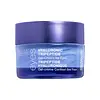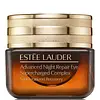What's inside
What's inside
 Key Ingredients
Key Ingredients

 Benefits
Benefits

 Concerns
Concerns

 Ingredients Side-by-side
Ingredients Side-by-side

Water
Skin ConditioningIsododecane
EmollientDimethicone
EmollientGlycerin
HumectantDimethicone Crosspolymer
Emulsion StabilisingPentylene Glycol
Skin ConditioningNeopentyl Glycol Diheptanoate
EmollientPolymethylsilsesquioxane
Myristyl Nicotinate
Skin ConditioningTetrahexyldecyl Ascorbate
AntioxidantButylene Glycol
HumectantCarbomer
Emulsion StabilisingCaprylyl Glycol
EmollientPanthenol
Skin ConditioningCI 77891
Cosmetic ColorantPhenoxyethanol
PreservativeSodium Hydroxide
BufferingHelianthus Annuus Seed Oil
EmollientCitrus Medica Vulgaris Fruit Extract
AntioxidantLens Esculenta Fruit Extract
Skin ConditioningPyrus Malus Fruit Extract
Skin ConditioningNicotiana Benthamiana Octapeptide-30 Sh-Oligopeptide-2
Skin ConditioningParfum
MaskingEthylhexylglycerin
Skin ConditioningHexylene Glycol
EmulsifyingGlyceryl Acrylate/Acrylic Acid Copolymer
HumectantIsohexadecane
EmollientCarnosine
Skin ConditioningDisodium EDTA
Allantoin
Skin ConditioningSodium Hyaluronate
HumectantBenzophenone-4
UV AbsorberSodium Lactate
BufferingGlycine Soja Oil
EmollientAlumina
AbrasiveIsopropyl Titanium Triisostearate
EmollientDunaliella Salina Extract
Skin ConditioningLupinus Albus Seed Extract
Skin ConditioningSodium PCA
HumectantDiglucosyl Gallic Acid
Bacillus/Sea Salt Ferment Filtrate
Skin ConditioningCitric Acid
BufferingEthylene/Propylene/Styrene Copolymer
Lecithin
EmollientSodium Benzoate
MaskingPolyhydroxystearic Acid
EmulsifyingPotassium Sorbate
PreservativeOryza Sativa Extract
AbsorbentBenzyl Benzoate
AntimicrobialPolyglyceryl-3 Diisostearate
EmulsifyingLimonene
PerfumingPalmitoyl Tripeptide-5
Skin ConditioningPantolactone
HumectantButylene/Ethylene/Styrene Copolymer
Silica
AbrasiveGlobularia Alypum Leaf Extract
Skin ConditioningLinalool
PerfumingPlankton Extract
Skin ConditioningCitral
PerfumingCitronellol
PerfumingTocopherol
AntioxidantGeraniol
PerfumingBenzyl Salicylate
PerfumingBenzyl Alcohol
PerfumingCI 42090
Cosmetic ColorantWater, Isododecane, Dimethicone, Glycerin, Dimethicone Crosspolymer, Pentylene Glycol, Neopentyl Glycol Diheptanoate, Polymethylsilsesquioxane, Myristyl Nicotinate, Tetrahexyldecyl Ascorbate, Butylene Glycol, Carbomer, Caprylyl Glycol, Panthenol, CI 77891, Phenoxyethanol, Sodium Hydroxide, Helianthus Annuus Seed Oil, Citrus Medica Vulgaris Fruit Extract, Lens Esculenta Fruit Extract, Pyrus Malus Fruit Extract, Nicotiana Benthamiana Octapeptide-30 Sh-Oligopeptide-2, Parfum, Ethylhexylglycerin, Hexylene Glycol, Glyceryl Acrylate/Acrylic Acid Copolymer, Isohexadecane, Carnosine, Disodium EDTA, Allantoin, Sodium Hyaluronate, Benzophenone-4, Sodium Lactate, Glycine Soja Oil, Alumina, Isopropyl Titanium Triisostearate, Dunaliella Salina Extract, Lupinus Albus Seed Extract, Sodium PCA, Diglucosyl Gallic Acid, Bacillus/Sea Salt Ferment Filtrate, Citric Acid, Ethylene/Propylene/Styrene Copolymer, Lecithin, Sodium Benzoate, Polyhydroxystearic Acid, Potassium Sorbate, Oryza Sativa Extract, Benzyl Benzoate, Polyglyceryl-3 Diisostearate, Limonene, Palmitoyl Tripeptide-5, Pantolactone, Butylene/Ethylene/Styrene Copolymer, Silica, Globularia Alypum Leaf Extract, Linalool, Plankton Extract, Citral, Citronellol, Tocopherol, Geraniol, Benzyl Salicylate, Benzyl Alcohol, CI 42090
Methyl Trimethicone
Skin ConditioningWater
Skin ConditioningBifida Ferment Lysate
Skin ConditioningDimethicone
EmollientDimethicone/Vinyl Dimethicone Crosspolymer
Skin ConditioningPropanediol
SolventSucrose
HumectantPetrolatum
EmollientPolysorbate 40
EmulsifyingTrehalose
HumectantAlgae Extract
EmollientMorus Bombycis Root Extract
Skin ConditioningScutellaria Baicalensis Root Extract
AstringentLactobacillus Ferment
Skin ConditioningTriticum Vulgare Germ Extract
Skin ConditioningAcrylamide/Sodium Acryloyldimethyltaurate Copolymer
Emulsion StabilisingBetula Alba Bud Extract
Skin ConditioningHydrolyzed Algin
Poria Cocos Sclerotium Extract
AstringentJojoba Alcohol
EmollientEthylhexylglycerin
Skin ConditioningGlycine Soja Seed Extract
Skin ConditioningIsopropyl Jojobate
EmollientJojoba Esters
EmollientIsohexadecane
EmollientYeast Extract
Skin ConditioningHydrogenated Lecithin
EmulsifyingHordeum Vulgare Extract
EmollientPEG/PPG-18/18 Dimethicone
EmulsifyingCholesterol
EmollientAnthemis Nobilis Flower Extract
MaskingTocopheryl Acetate
AntioxidantSodium Rna
Skin ConditioningCaffeine
Skin ConditioningPolysorbate 80
EmulsifyingCaprylyl Glycol
EmollientPhytosphingosine
Skin ConditioningSqualane
EmollientPotassium Sulfate
Sodium Hyaluronate
HumectantAcrylates/C10-30 Alkyl Acrylate Crosspolymer
Emulsion StabilisingTripeptide-32
Skin ConditioningButylene Glycol
HumectantTromethamine
BufferingDisodium EDTA
BHT
AntioxidantPhenoxyethanol
PreservativeIron Oxides
Methyl Trimethicone, Water, Bifida Ferment Lysate, Dimethicone, Dimethicone/Vinyl Dimethicone Crosspolymer, Propanediol, Sucrose, Petrolatum, Polysorbate 40, Trehalose, Algae Extract, Morus Bombycis Root Extract, Scutellaria Baicalensis Root Extract, Lactobacillus Ferment, Triticum Vulgare Germ Extract, Acrylamide/Sodium Acryloyldimethyltaurate Copolymer, Betula Alba Bud Extract, Hydrolyzed Algin, Poria Cocos Sclerotium Extract, Jojoba Alcohol, Ethylhexylglycerin, Glycine Soja Seed Extract, Isopropyl Jojobate, Jojoba Esters, Isohexadecane, Yeast Extract, Hydrogenated Lecithin, Hordeum Vulgare Extract, PEG/PPG-18/18 Dimethicone, Cholesterol, Anthemis Nobilis Flower Extract, Tocopheryl Acetate, Sodium Rna, Caffeine, Polysorbate 80, Caprylyl Glycol, Phytosphingosine, Squalane, Potassium Sulfate, Sodium Hyaluronate, Acrylates/C10-30 Alkyl Acrylate Crosspolymer, Tripeptide-32, Butylene Glycol, Tromethamine, Disodium EDTA, BHT, Phenoxyethanol, Iron Oxides
 Reviews
Reviews

Alternatives
Ingredients Explained
These ingredients are found in both products.
Ingredients higher up in an ingredient list are typically present in a larger amount.
Butylene Glycol (or BG) is used within cosmetic products for a few different reasons:
Overall, Butylene Glycol is a safe and well-rounded ingredient that works well with other ingredients.
Though this ingredient works well with most skin types, some people with sensitive skin may experience a reaction such as allergic rashes, closed comedones, or itchiness.
Learn more about Butylene GlycolCaprylyl Glycol is a humectant and emollient, meaning it attracts and preserves moisture.
It is a common ingredient in many products, especially those designed to hydrate skin. The primary benefits are retaining moisture, skin softening, and promoting a healthy skin barrier.
Though Caprylyl Glycol is an alcohol derived from fatty acids, it is not the kind that can dry out skin.
This ingredient is also used as a preservative to extend the life of products. It has slight antimicrobial properties.
Learn more about Caprylyl GlycolDimethicone is a type of synthetic silicone created from natural materials such as quartz.
What it does:
Dimethicone comes in different viscosities:
Depending on the viscosity, dimethicone has different properties.
Ingredients lists don't always show which type is used, so we recommend reaching out to the brand if you have questions about the viscosity.
This ingredient is unlikely to cause irritation because it does not get absorbed into skin. However, people with silicone allergies should be careful about using this ingredient.
Note: Dimethicone may contribute to pilling. This is because it is not oil or water soluble, so pilling may occur when layered with products. When mixed with heavy oils in a formula, the outcome is also quite greasy.
Learn more about DimethiconeDisodium EDTA plays a role in making products more stable by aiding other preservatives.
It is a chelating agent, meaning it neutralizes metal ions that may be found in a product.
Disodium EDTA is a salt of edetic acid and is found to be safe in cosmetic ingredients.
Learn more about Disodium EDTAEthylhexylglycerin (we can't pronounce this either) is commonly used as a preservative and skin softener. It is derived from glyceryl.
You might see Ethylhexylglycerin often paired with other preservatives such as phenoxyethanol. Ethylhexylglycerin has been found to increase the effectiveness of these other preservatives.
Isohexadecane is added to enhance texture, emulsify, and to help cleanse. It is an isoparrafin. It is a component of petrolatum.
Due to its large size, Isohexadecane is not absorbed by the skin. Instead, it sits on top and acts as an emollient. Emollients help keep your skin soft and smooth by trapping moisture within.
Isohexadecane is often used in products designed to help oily skin. It is lightweight and non-greasy while helping to moisturize. When mixed with silicones, it gives a product a silky feel.
Learn more about IsohexadecanePhenoxyethanol is a preservative that has germicide, antimicrobial, and aromatic properties. Studies show that phenoxyethanol can prevent microbial growth. By itself, it has a scent that is similar to that of a rose.
It's often used in formulations along with Caprylyl Glycol to preserve the shelf life of products.
Sodium Hyaluronate is hyaluronic acid's salt form. It is commonly derived from the sodium salt of hyaluronic acid.
Like hyaluronic acid, it is great at holding water and acts as a humectant. This makes it a great skin hydrating ingredient.
Sodium Hyaluronate is naturally occurring in our bodies and is mostly found in eye fluid and joints.
These are some other common types of Hyaluronic Acid:
Learn more about Sodium HyaluronateWater. It's the most common cosmetic ingredient of all. You'll usually see it at the top of ingredient lists, meaning that it makes up the largest part of the product.
So why is it so popular? Water most often acts as a solvent - this means that it helps dissolve other ingredients into the formulation.
You'll also recognize water as that liquid we all need to stay alive. If you see this, drink a glass of water. Stay hydrated!
Learn more about Water